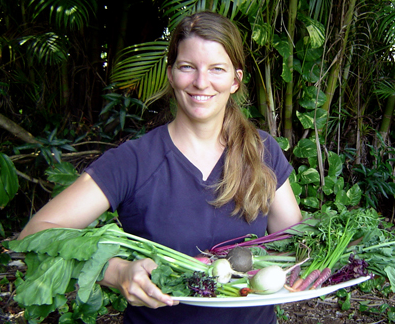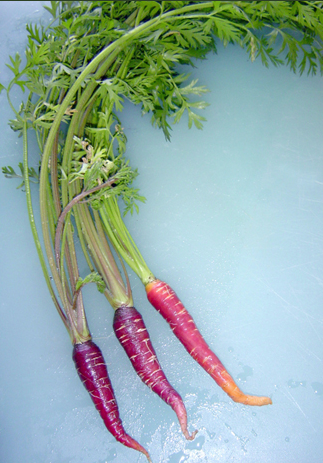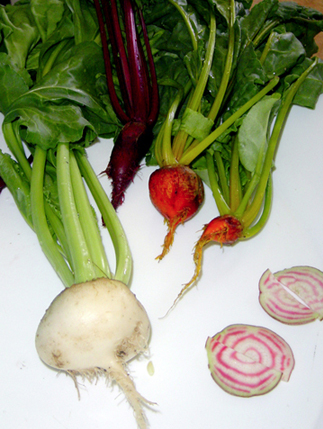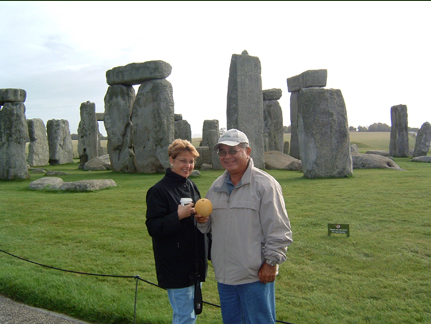While we’re on the topic of new things happening at Hamakua Springs, here’s something else coming up that is very interesting: The farm is planning to start growing taro and producing and selling poi.
Why poi? I asked Richard.
“You know when we had that last cookout, the big deal was the smoked meat,” he said. “That’s the sort of stuff we eat and like. We also like to eat poi. I feel like we’ve gotta go do it. There’s a poi shortage, for one.”
He stresses that the poi production, like everything else at the farm, will be taste-driven. “We really need to find out what taro makes a really good poi, and then we’ll grow that,” he said. “It won’t just be who happens to have some huli we can get. We’ll go with what we think is the best tasting. We’ve gotta make ourselves happy first and then go from there.”
He plans to grow the kalo in the traditional wetland style, but will depart from tradition by pumping the water back up after it runs down through the lo‘i. “The water won’t just go into the stream,” he said. “We’ll have our own electricity and we can pump it back uphill. Using the traditional along with the modern.”
“Hawaiian style was all about sustainability,” he said. “If you weren’t sustainable, the race would perish. We’re still thinking along those lines today. I don’t see it as much different. We’re doing with what we have.”
I was fascinated when he told me this, and started to say something about how I’m sure the Hawaiians would have used a similar technology had it been available to them.
But then it occurred to me: They are. He is. Richard is Hawaiian (as well as Okinawan and Korean), and he is using the traditional style while adapting it to modern conditions. Bingo.
I asked Richard how far he planned to go with growing taro and producing poi, and he said it would be largely demand-driven. I thought about how many times I’ve stood, staring at an empty supermarket shelf where the poi would be if there demand didn’t far exceed supply. The demand is there. Like with the farmstand, I think this, too, is an exciting avenue for Hamakua Springs.
Stay tuned for more info. – posted by Leslie Lang




 “It’s so fun to grow something for the first time,” she says. “It’s all this different, funny-looking stuff, like stripey vegetables. A lot of these carrots we’re growing are higher in Beta-carotene and Vitamin A than the usual. In the stores, a lot of farms tend to do just one variety based on performance and disease-resistance, rather than color. We will be accomplishing the goal of getting more nutrients out to people by growing these varieties.”
“It’s so fun to grow something for the first time,” she says. “It’s all this different, funny-looking stuff, like stripey vegetables. A lot of these carrots we’re growing are higher in Beta-carotene and Vitamin A than the usual. In the stores, a lot of farms tend to do just one variety based on performance and disease-resistance, rather than color. We will be accomplishing the goal of getting more nutrients out to people by growing these varieties.”